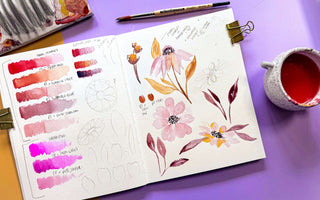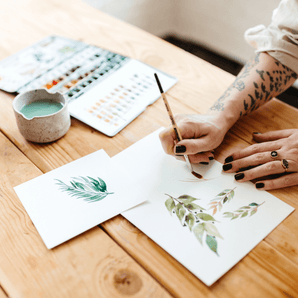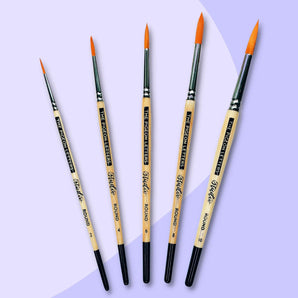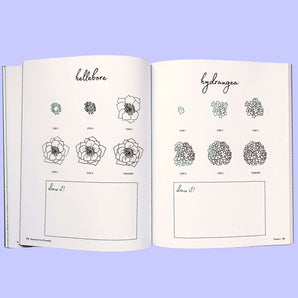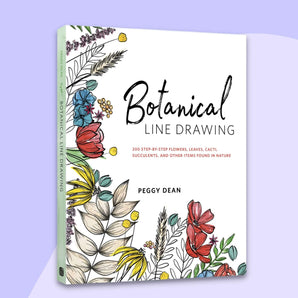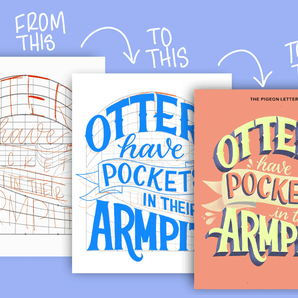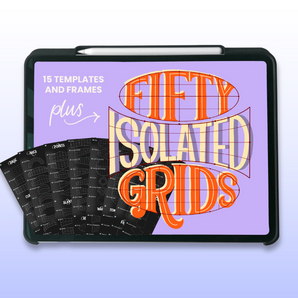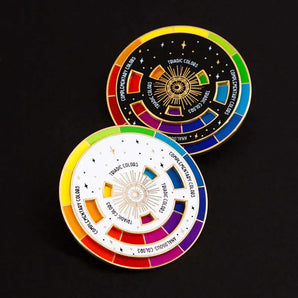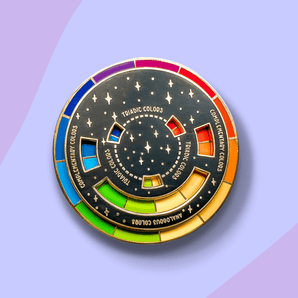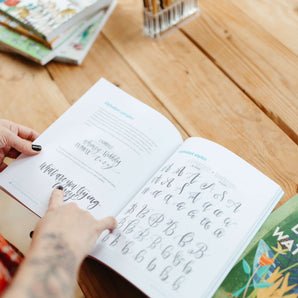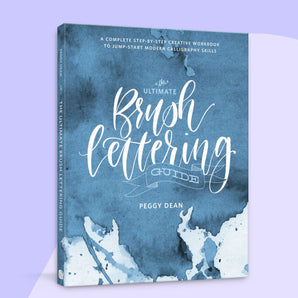Mastering watercolor water control: the secret to beautiful, loose florals
If you've ever ended up with puddles of paint pooling on your watercolor paper (we've ALL been there!), then this watercolor tutorial is here just for you. Learning proper water control is honestly one of the biggest game changers in your watercolor journey, and once you nail it, your paintings will level up instantly.
Today, we're breaking down everything you need to know about paint-to-water ratios, watercolor consistency, and how to avoid those frustrating wet spots that seem to appear out of nowhere.
Why water control matters when watercolor painting
Here's the thing about watercolor: not all pigments are created equal. I repeat: not all pigments are created equal. That means even the same brand of watercolor can have paint that responds a little differently. Not to mention, that garnet behaves completely differently than your burnt sienna, and that's because of the properties in the paint themselves. Some watercolor paints are granulating, some are more transparent, and they all have their own personalities.
💡 But the one thing that applies to ALL of them? Understanding how to control the water on your brush. Master this watercolor technique, and you'll have so much more control over your artwork.
Understand paint-to-water ratio
When watercolor artists talk about "1 part water, 1 part paint," what does that actually mean? Let me break it down for you.
Step 1: Creating a 1:1 ratio
Grab your favorite color from your palette and mix it with an equal amount of water. This should give you a nice, spreadable consistency that's not dripping down your palette, but wet enough to flow smoothly. This is your baseline for watercolor painting - not too wet, not too dry.
If your mixture is dripping all over the place, you've got too much water. If it's thick and barely moving, add a bit more water to thin it out.

Step 2: Tea, coffee, and cream scale
You might have heard watercolor teachers reference the "tea, coffee, cream" consistency scale. This is actually super helpful for understanding watercolor consistency.
- Tea consistency: Very watery, super transparent, light washes
- Coffee consistency: Medium consistency, semi-transparent
- Cream consistency: Thick, rich, opaque, full pigment
Each consistency has its place in watercolor painting, and you'll use all three in a single painting!
How to tell when you have too much water
This is where a lot of beginners struggle with watercolor techniques. Here's the test: move your loaded brush around on your palette. If it's dripping everywhere and leaving wet puddles, you've got too much water. If it's moving but staying relatively controlled, you're in the sweet spot.
Step 3: Removing excess water
This is a relieving watercolor tip: before you touch that brush to your paper, remove the excess water. You have two options:
-
Option 1: Gently drag your brush along the rim of your water jar. Just a quick swipe will remove the extra water while keeping your paint nice and juicy.
- Option 2: Dab the belly of your brush on a paper towel. Don't press hard - just set it gently on the towel and let it absorb the excess.
Step 4: Test your consistency
Now apply your paint to the paper. It should spread evenly without pooling. If you see puddles forming, your brush still has too much water. No worries! Just grab a damp (not wet) brush and lift that excess water right off the paper.
Creating loose watercolor florals with proper water control
Even when you're controlling your water, you can still achieve those beautiful, organic bleeds that make loose watercolor florals so gorgeous. The trick is having enough water for colors to blend without flooding the paper.

Step 5: Layer colors
Want to drop in a second color while your first wash is still wet? Here's how:
- Load your brush with your second color
- Check the consistency - is it dripping? Then remove that excess!
- Dab on your paper towel or drag along your water jar
- Apply to your painting
You'll get beautiful, controlled bleeds without the chaos of too much water. The colors will still blend and create those soft, dreamy edges, just without creating a watery mess.
Pro tips for watercolor beginners
- Watch how your paint drips on the palette before painting - this tells you everything about your water content
- Practice makes perfect - every pigment behaves differently, so experiment with your own paints
- A damp brush can save the day - use it to lift excess water or paint from your paper
The bottom line
Watercolor water control isn't about being perfect. It's about understanding your materials and knowing how to adjust. Whether you're painting loose florals or detailed landscapes, these watercolor techniques will give you the confidence to play and experiment without fear of flooding your paper.
Remember: the consistency is totally up to you and what effect you're going for. Just make sure you're removing that excess water before you paint, and you'll have SO much more control.
Ready to put these tips into practice? Watch my full watercolor florals class to see these techniques in action, and don't forget to share your watercolor paintings with me. I'd love to see what you create!




